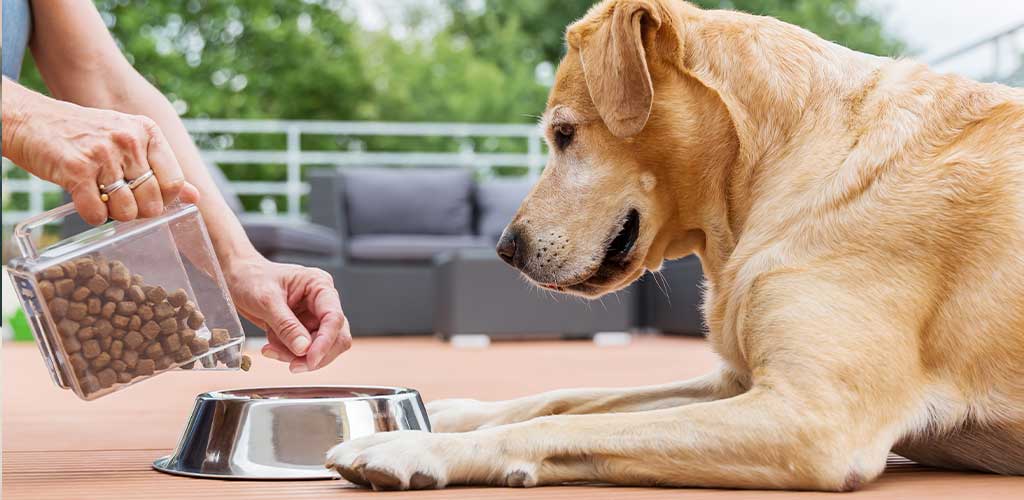In 24 cities

Benefits of Slow Eating Dog Food Bowls
|
|
Time to read 4 min
Get product availability and delivery timelines based on your location.
Are you sure you want to delete this address?
Help us ensure a smooth delivery
Help us ensure a smooth delivery
SIZE GUIDE
|
|
Time to read 4 min
Does your dog wolf down their food like it’s the first time they’re eating? Or does your pal have a habit of gulping the dog food too quickly?
Food consumed improperly can cause certain complications like choking, gas, weight gain and bloating.
Yes, even dogs do suffer from these issues. Now, you must be thinking about how to teach your fast eater pet to eat food slowly, right?
Well, teaching is a continuous process and it may take time to get properly implemented. Till then, you can consider certain slow eating food bowls to prevent your dog from eating quickly.
In addition, several vets emphasize the need for these bowls to prevent unwanted digestive issues or choking. Read on to get better insights on some essential points to buy slow feeders for your pal.
Slow eating food bowls are a great way to help your dog eat more slowly and prevent them from choking or vomiting. They are also helpful for dogs who tend to overeat. Some of the benefits are:
The first reason to consider a slow dog feeding bowl is to curb extra gas buildup and bloating. According to some vets, large and giant dog breeds are more prone to develop these problems.
Though bloating is a very common and curable problem but when not treated or paid attention to, in time, can lead to some life-threatening diseases. As in severe cases, excess gas pressure causes a dog stomach to fill with air and cut off circulation to the heart.
To avoid such scenarios, it is advisable to use slow dog feeding bowls and live a happy life with your companion.
Considering a slow feeder bowl will help your pal eat bit by bit. This will improve their digestion process and keep the dog away from ailing gut issues.
Plus, it will make your dog feel fuller and more satisfied for a longer duration. Hence, slow feeders can make mealtimes a little farther apart from each other to allow your dog’s stomach to catch up with their brain and receive the, “I am full signal”. Besides, it will also help in preventing overeating.
These bowls not only help in developing good eating habits but also in keeping your dog’s mind sharp. Many of the bowls are designed to be a challenge for your pet to work hard for their food.
Like, some dog feeding bowls come in puzzle-like shapes.
This eventually increases their mental activity. A physically and mentally fit dog is less likely to behave in destructive ways to relieve pent up energy or boredom.
These are the three most important benefits of slow eating food bowls for dogs. However, buying dog bowls which are high quality is also essential to let your pal eat food easily without having broken or wear and tear issues.
Supertails provides the finest quality of pet essentials including dog food and slow feeders. Explore the website to get a one-stop solution to all your pets’ requirements along with online vet consultations on your devices.
Slow dog feeders can contribute to weight loss in dogs by several mechanisms. Firstly, they prolong mealtime, encouraging dogs to savor their food and giving their bodies time to register satiety signals from the brain. This reduces the likelihood of overeating and helps dogs feel satisfied with smaller portions.
Secondly, slow feeders introduce an element of challenge to mealtime, making dogs work for their food. This mental stimulation can help them feel more fulfilled and reduce boredom-driven eating behaviors.
Additionally, slow feeders can aid in digestion by promoting slower food intake and allowing for better absorption of nutrients. This improved digestion can lead to more efficient energy utilization and reduced fat storage.
Yes, some dogs may get frustrated with slow feeders, especially if they are not used to them. This is because they have to work harder to get their food. However, most dogs will adapt to slow feeders after a few days.
If your dog is having trouble adjusting to a slow feeder, you can try introducing it slowly and gradually increasing the difficulty level. You can also try using a different type of slow feeder or adding some treats or wet food to make it more enticing.
There are many reasons why dogs eat nonstop. Some possible reasons include:
Boredom: Dogs may eat out of boredom if they don't have enough stimulation or activity.
Anxiety: Dogs may eat out of anxiety if they are feeling stressed or anxious.
Yes, ceramic slow feeders are considered safe for dogs. They are made from non-toxic materials and are easy to clean, making them a hygienic option for pet owners. However, it is essential to choose a ceramic slow feeder that is appropriately sized for your dog.
If the slow feeder is too large, it could be easily tipped over by your dog, causing potential hazards or disruptions during mealtime. Additionally, opting for a ceramic slow feeder with a non-slip base can further enhance stability and prevent accidental spills.
No, it is generally not recommended to put water in a slow feeder. Slow feeders are specifically designed to slow down your dog's eating pace and prevent them from gulping down their food too quickly.
Introducing water into the slow feeder would defeat this purpose, as it would allow your dog to easily consume both their food and water simultaneously, potentially leading to overeating or digestive issues. Additionally, water can make it more challenging for your dog to extract their food from the slow feeder's intricate design.
Share this blog
Read More Articles
2 item in cart
₹10,360




